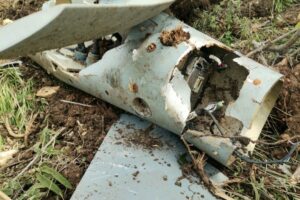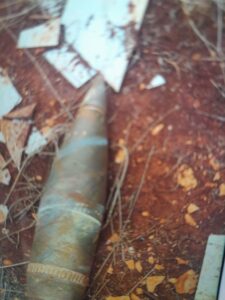5 results
Current Filter
Lebanon
A small country in the Middle East, bordering Syria to the north and east and Israel to the south. The Lebanese militant group Hezbollah has fought multiple conflicts with Israel.

Analyst Note:
The image is of "a high-velocity shell fired from the main armament of a battle tank," Desmond Travers, former director of the Institute for International Criminal Investigations, told Airwars and AFP. "The calibre appears to be 120 mm, and the shell is fin-stabilised. The maximum effective range is five kilometers, but a skilled tank crew member should be able to hit a target the size of a car." (Airwars)












